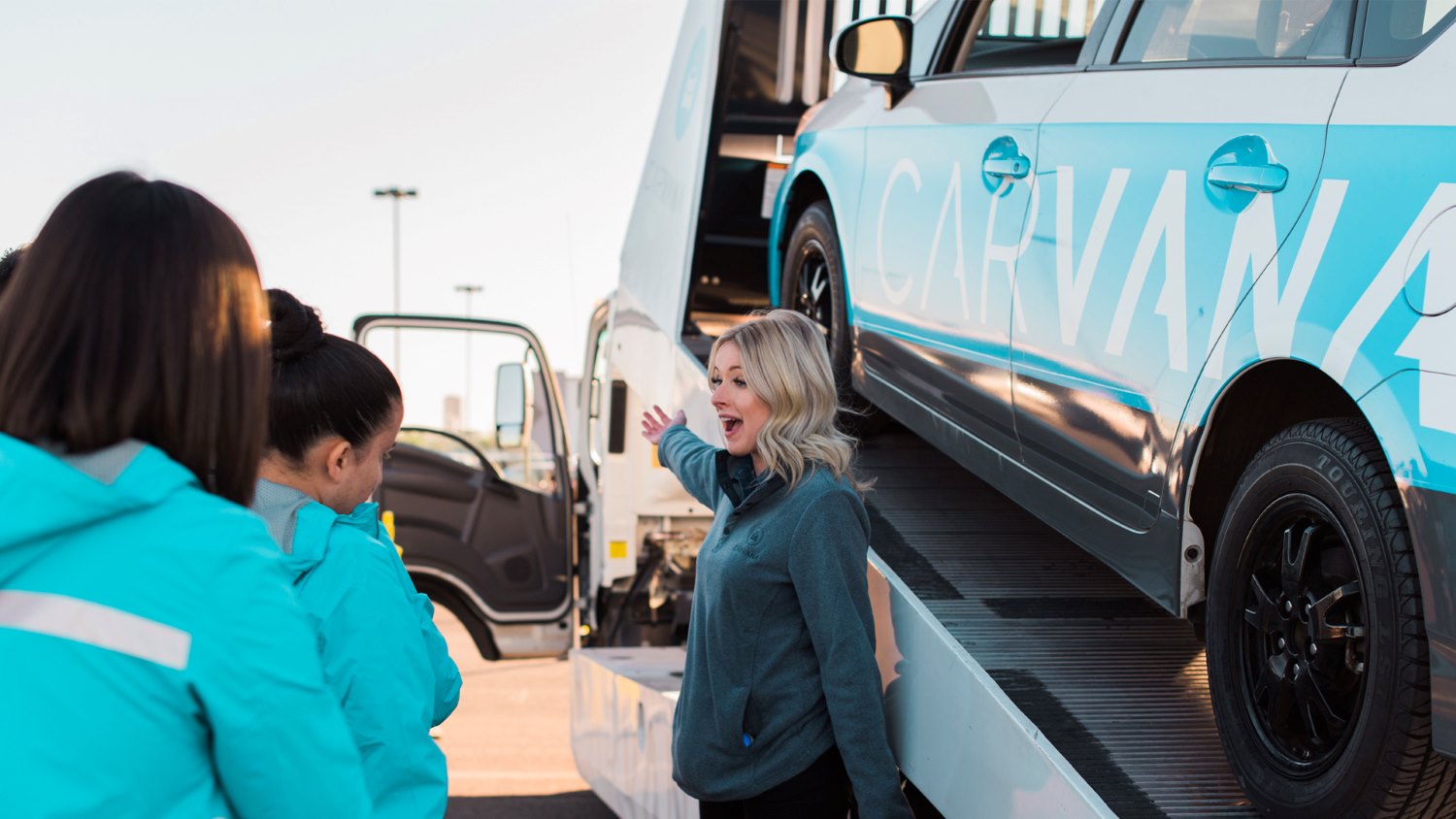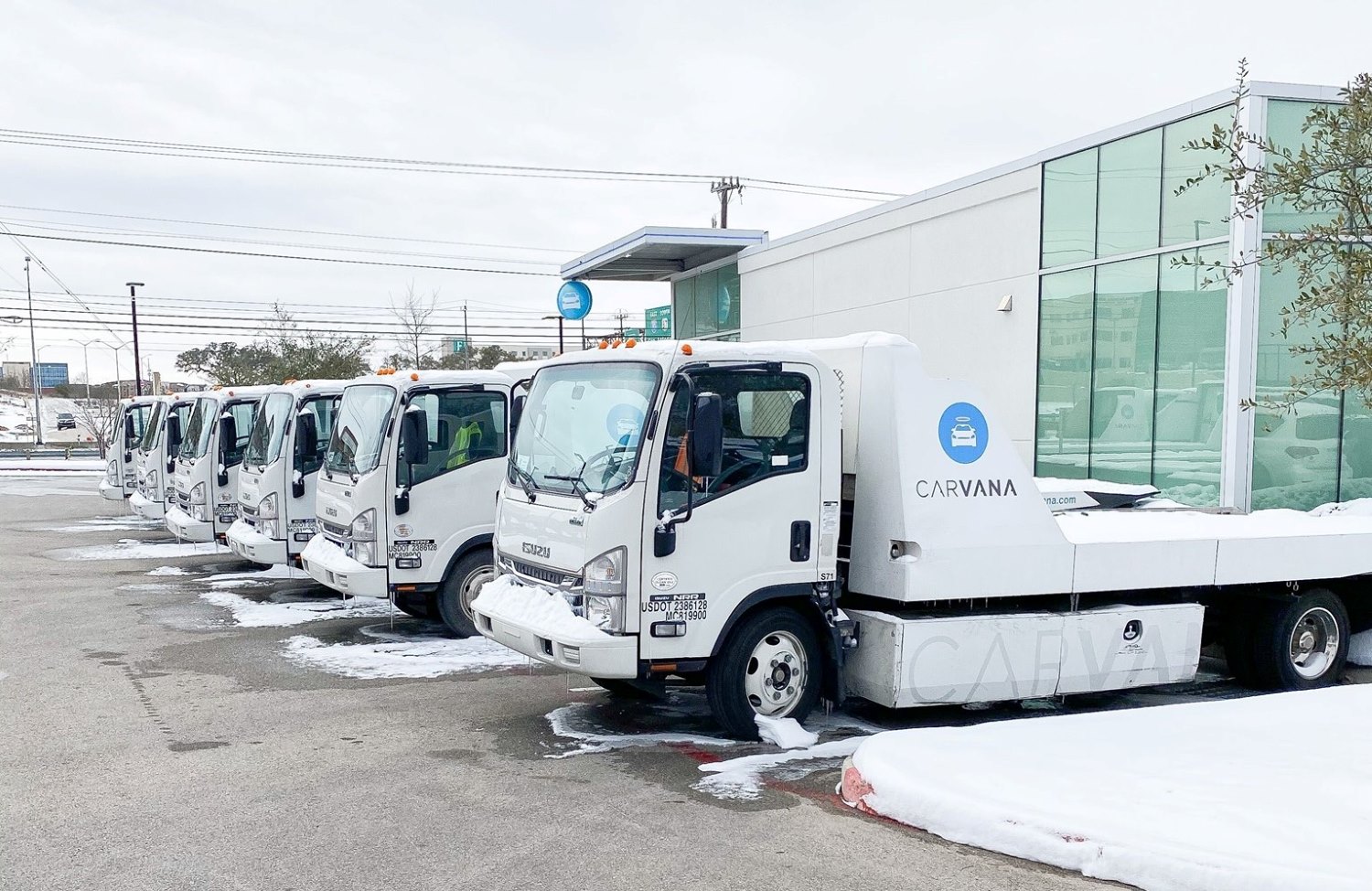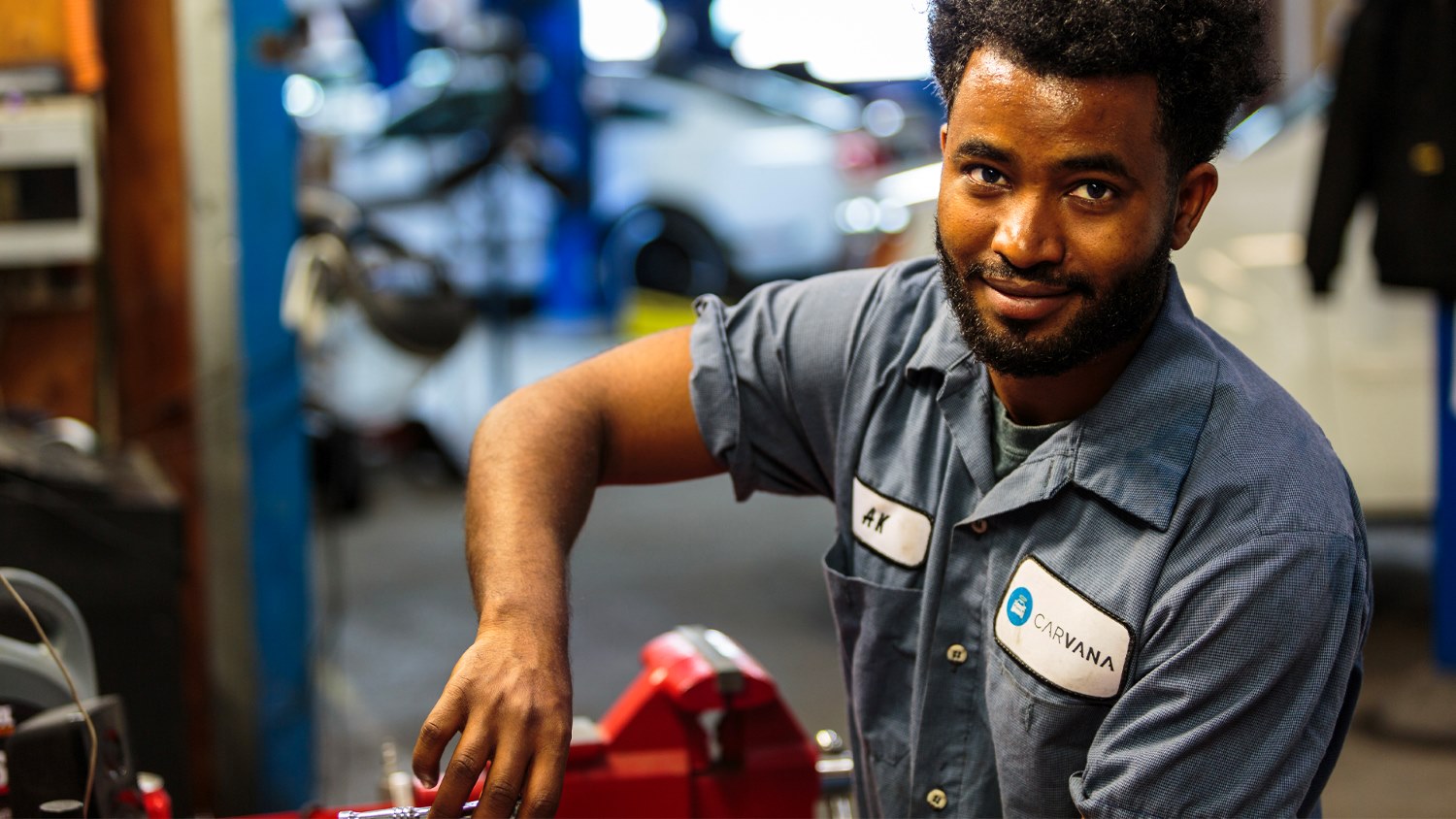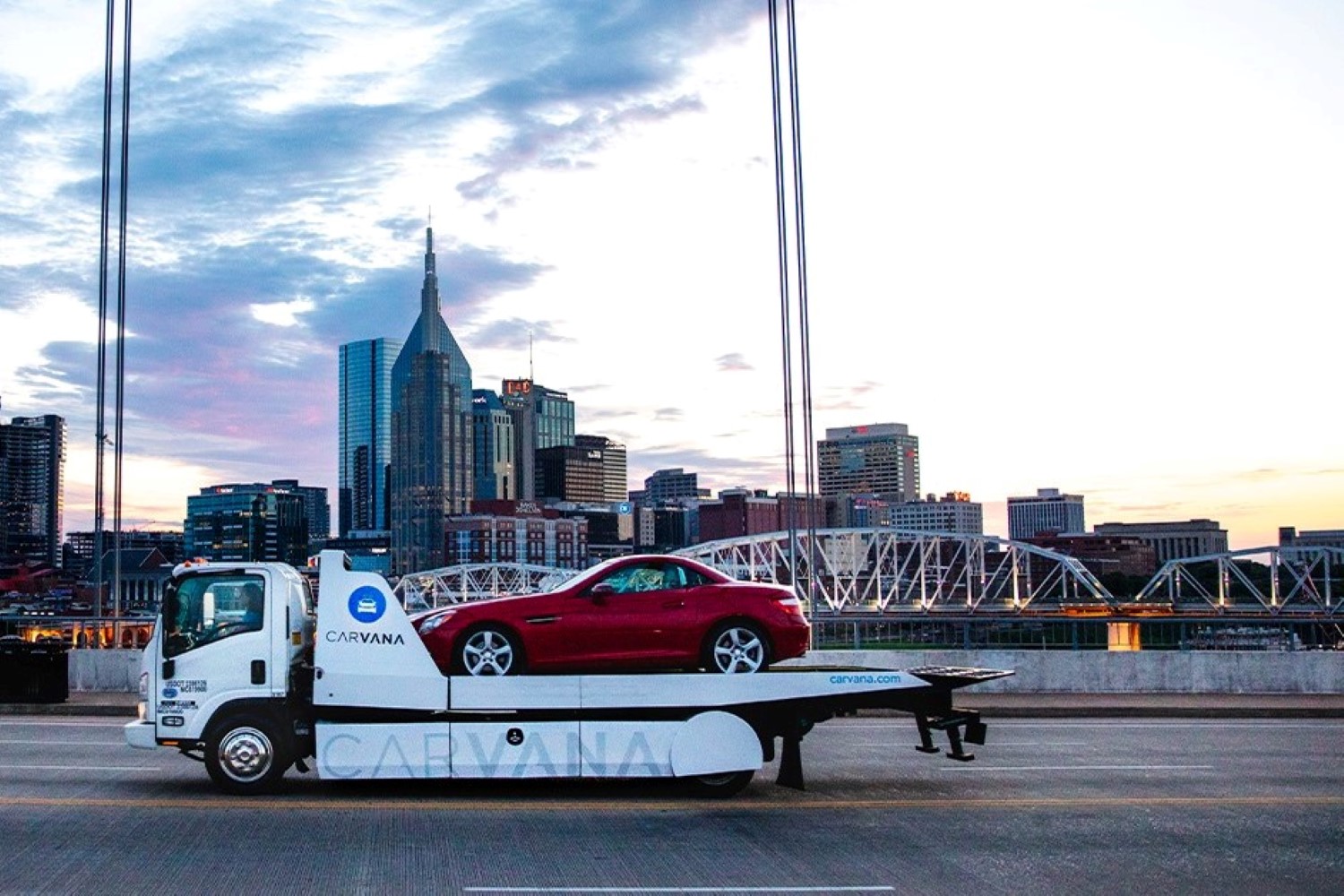Challenges & Debt Woes: Carvana Enters Its Twilight “Chapter” in Shifting Used Car Scene?
The used car industry has seen significant growth and evolution in recent years, with the online platform Carvana emerging as a major player. The company has achieved a number of impressive milestones, including its successful initial public offering (IPO) in 2017 and its expansion to over 250 markets across the United States.
Carvana’s innovative approach to commercializing used cars, which includes fully online purchasing experience and home delivery, has disrupted the traditional dealership model and attracted a growing number of customers.
Given its rapid expansion and accomplishment, however, Carvana still faces several challenges that could impact its future growth trajectory. There is a belief among some that Carvana may be facing the possibility of bankruptcy. This raises questions about what may have led to this situation. To understand this further, let’s keep reading.
Bad Hit of the Pandemic and Rising Interest Rates on the “Amazon of Used Cars”
Before diving deep into the dark possibility, let’s take a closer look at Carvana’s business model and how it has disrupted the traditional dealership model.
Carvana is a unique player in the used car industry, with a business model that allows customers to purchase cars entirely online and have them delivered to their doorstep. The company has received recognition for its innovative approach to car sales, including being named one of the “World’s Most Innovative Companies” by Forbes in 2020.
Carvana’s focus on customer experience is also evident in its seven-day test-own period, during which customers can decide whether to keep their purchased car or return it for a full refund.
Additionally, Carvana is committed to sustainability, implementing green initiatives such as eco-friendly car wash systems and recycling materials from its car packaging. These positive points, along with Carvana’s rapid growth and its unique vending machines for picking up purchased cars, make the company an interesting and promising player in the used car industry.
The giant player has experienced rapid revenue growth since its inception, with its revenue increasing from $260 million in 2016 to staggeringly $5.6 billion in 2020. This represents a compound annual growth rate of over 100% and is a testament to the company’s winning approach to selling used cars.

The company has described itself as “The Amazon of Used cars”. However, Carvana still faces a few challenges.
The COVID-19 pandemic had a significant impact on the used car market, as production shutdowns and reduced trade-ins led to a decline in the supply of used cars. This, in turn, drove up the prices of used cars, which made it more difficult for consumers to afford them.
As a result, Carvana, like other dealerships, had to adjust its pricing strategy to remain competitive. However, as the pandemic began to ease and people started to shift back to physical stores, Carvana faced challenges in selling its high-priced used cars, especially as interest rates rose, making it more expensive for consumers to finance their purchases.
In an article by Auto Remarketing, Jason Allan, senior director of valuation services at JD Power, notes that: “Interest rates have been going up, which is leading to longer loan terms and higher monthly payments. It is making it more difficult for consumers to afford the car they want, so they are either financing for a longer term or not buying a car at all.”
According to a report by Bankrate, the average interest rate on a 48-month used car loan rose from 4.07% in January 2020 to 5.22% in January 2022.
In order to maintain its inventory levels during the pandemic, Carvana went out and bought a large number of used cars at these high prices. While this strategy helped the company maintain its inventory levels, it also resulted in Carvana having a large amount of high-priced inventory that may be more difficult to sell in the current market.
Specifically, Carvana’s Q4 2020 financial results showed that the company had purchased 39,276 vehicles in the quarter, marking a significant increase of 37% year-over-year. The subsequent increase in interest rates has made it more difficult for consumers to finance their car purchases, which has made some people more hesitant to buy. This, in turn, has put additional pressure on Carvana to sell its high-priced inventory, which could impact the company’s profitability in the short term.
In a recent interview with CNBC, Ernie Garcia III, the founder and CEO of Carvana, acknowledged the significant disruption caused by the shortage of used cars during the pandemic. He noted that the company had to adjust its pricing strategy to remain competitive in the market, saying, “The used-car market has certainly seen a lot of disruption in the last 18 months…We have had to adjust our pricing strategy to make sure we’re competitive in the marketplace.”
He also acknowledged the company’s declining revenue per unit sold, stating: “I think what we’re seeing is a shift in mix, so we’re selling more affordable cars, which typically carry lower margins, and that has certainly impacted revenue per unit.” Carvana reported revenue per unit sold of $3,135 in Q4 2021, down from $3,385 in the same quarter the previous year.
Expanded Physical Presence in Response to Shift Back to In-Person Car Shopping

The pandemic had reshaped the way people shop for cars, with many consumers turning to online options like Carvana to avoid physical dealerships. However, as the pandemic began to wind down and restrictions got lifted, there was a shift back to physical stores.
According to a report by Cox Automotive, 71% of consumers who purchased a vehicle during the pandemic did so online, compared to only 35% of consumers who purchased a vehicle before the pandemic.
Additionally, a survey by Cars.com found that 67% of consumers who purchased a car during the pandemic said they would have preferred to do so in person rather than online. This further supports the idea that some consumers prefer the traditional dealership experience over online car shopping.
As reported by Automotive News, “The used-car market has shifted from a predominantly online business in 2020 to a more balanced mix of online and in-person sales in 2021 as consumer shopping habits have adapted to the pandemic’s ups and downs.”
However, as the pandemic wanes, physical dealerships are expected to see a resurgence in business, particularly as consumers may prefer to see and test drive the car before making a purchase. This shift could impact Carvana’s business, as the company’s online-only approach may become less attractive to consumers who prefer to shop in person.
In response to the challenges posed by physical dealerships during the pandemic, Carvana has been expanding its physical presence to remain competitive in the market. The company’s unique approach to selling cars entirely online has been a key factor in its success, but with the pandemic waning, the company has realized the importance of having a physical presence.
Carvana’s Car Finder Centers offer a hybrid experience, allowing customers to test drive vehicles before making a purchase online. These centers allow customers to get a feel for the car and ensure that it meets their needs, while also benefiting from Carvana’s convenient online purchasing process.
The company has also been expanding its Carvana Vending Machines, which have become an iconic part of the Carvana brand. These vending machines offer a unique and convenient way for customers to pick up their purchased cars, with contactless delivery and a seamless experience.
Drowning In $9 Billion Debt with Deteriorating Gross Margins

Despite Carvana’s efforts to expand its physical presence and maintain its inventory levels, the company still faces significant challenges, particularly in the form of high debt. It is reported Carvana’s total debt stood at $9 billion as of 2022. The company has been trying to drum up support from its creditors for a restructuring of its debt load, as it attempts to stay afloat in a market with declining vehicle sales.
Furthermore, the report notes that Carvana’s debt-to-equity ratio is quite high, indicating that the company has taken on a significant amount of debt relative to its equity. This high level of debt could limit the company’s ability to invest in future growth initiatives and could pose a risk to its long-term financial stability.
The pandemic-related challenges faced by Carvana, including the shortage of used cars and rising interest rates, have only exacerbated the company’s debt situation. As the company continues to invest in expanding its physical presence and maintaining its inventory levels, it may need to take on even more debt, which could further strain its financial position.
And it is a concern for investors as the company has a high level of debt and a negative free cash flow. As mentioned earlier, the company’s revenue per unit sold has decreased over the past year, which could be a sign of difficulty in selling its high-priced inventory.
Furthermore, Carvana’s recent issuance of $3.3 billion in senior unsecured notes in April 2022, which bear an interest rate of 10.25%, is a cause for concern. The interest rate on the debt is substantially higher than the 4.875% rate on senior unsecured notes issued in August 2021, indicating that Carvana is having to pay a higher price to borrow money.
This level of debt is concerning, as Carvana’s current cash reserves may not be enough to cover its financial obligations. According to an article by The Motley Fool, Carvana had less than six months of cash on its balance sheet based on its free cash flow burn over the past twelve months. This means that the company may need to raise more capital in the near future, which could dilute the value of existing shares and impact the company’s stock price.
Besides, Carvana’s declining gross profit per unit is a significant concern for the company’s financial health. The steep decline in the operating metric during 2022 is a reflection of the challenges the company is facing in the used car market.
In 2021, the company had gross margins of 15%, but in 2022, their gross margins shrunk to 9%, resulting in a significant decline in profitability. As a result, Carvana’s net income margin also collapsed all the way to -21.3%.
Carvana’s major creditors have come together to negotiate better terms in preparation for a possible restructuring. Ernie Garcia III mentioned during a conference call with analysts that the company’s plans to reduce costs and eventually expand have put them in a favorable position to avoid raising capital or restructuring their debt.
“We’ve got a real shot at not requiring additional capital,” Garcia said, citing the company’s real estate portfolio as one potential source of funds. “If we’re wrong, then we have lots of ways to go out and get additional capital.”
Ernie Garcia III described 2022 as a “very difficult year”, with sales falling by 23% in Q4 to around 87,000 vehicles, and gross profit per unit dropping by more than half. However, he expressed confidence that gross profit per unit would eventually recover to previous levels, exceeding $4,000 per vehicle, and that the company is planning to expand into new markets such as last-mile delivery and car repair and reconditioning.

According to Jefferies analyst John Colantuoni, who holds a “hold” rating on Carvana’s shares, Carvana’s current strategy to conserve cash by reducing inventory “does not give us confidence in the long-term viability of the business model,”
He further stated that the potential for a restructuring process will be the main driver of the company’s stock price, with fundamentals being less important. In his own words, “We anticipate views around a potential restructuring process will be the primary determinant of the stock price, with fundamentals as a distant secondary factor.”
Bottom Lines
As of the end of 2022, Carvana had $400 million in cash and had the ability to raise more than $3 billion through credit lines and real estate that has not been pledged as collateral.
While the company has taken steps to expand its physical presence and adjust its pricing strategy to stay competitive, it remains to be seen whether these efforts will be enough to overcome the obstacles it currently faces. Ultimately, only time will tell whether Carvana will be able to successfully navigate these challenges and emerge as a strong player in the used car industry.









